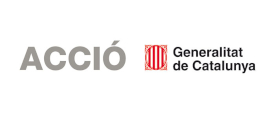Diseño de un carro eléctrico autonómo

Gracias al programa de CUPÓ Industria 4.0, d’ACCIÓ, VERNIS MOTORS, SL colaborado con EURECAT para el desarrollo Plataforma Eléctrica porta palets, que incorpora tecnologías de navegación autónoma y seguimiento de personas en vehículos agrícolas.
Implementación y prueba de concepto de la solución propuesta
Este cupón 4.0 de ACCIÓ ha permitido a VERNIS MOTORS establecer los fundamentos para realizar la navegación autónoma basada en el seguimiento de un operador preestablecido de modo estable y seguro, una solución modular de navegación basada en percepción multisensorial ha sido desarrollada por Eurecat. La arquitectura de software ha sido construida en el entorno Robot Operative System (ROS), compatible con la mayoría de los sensores y plataformas robóticas disponibles en el mercado y que permite la ejecución simultánea y en tiempo real de los distintos componentes del sistema.
Con el apoyo de:
